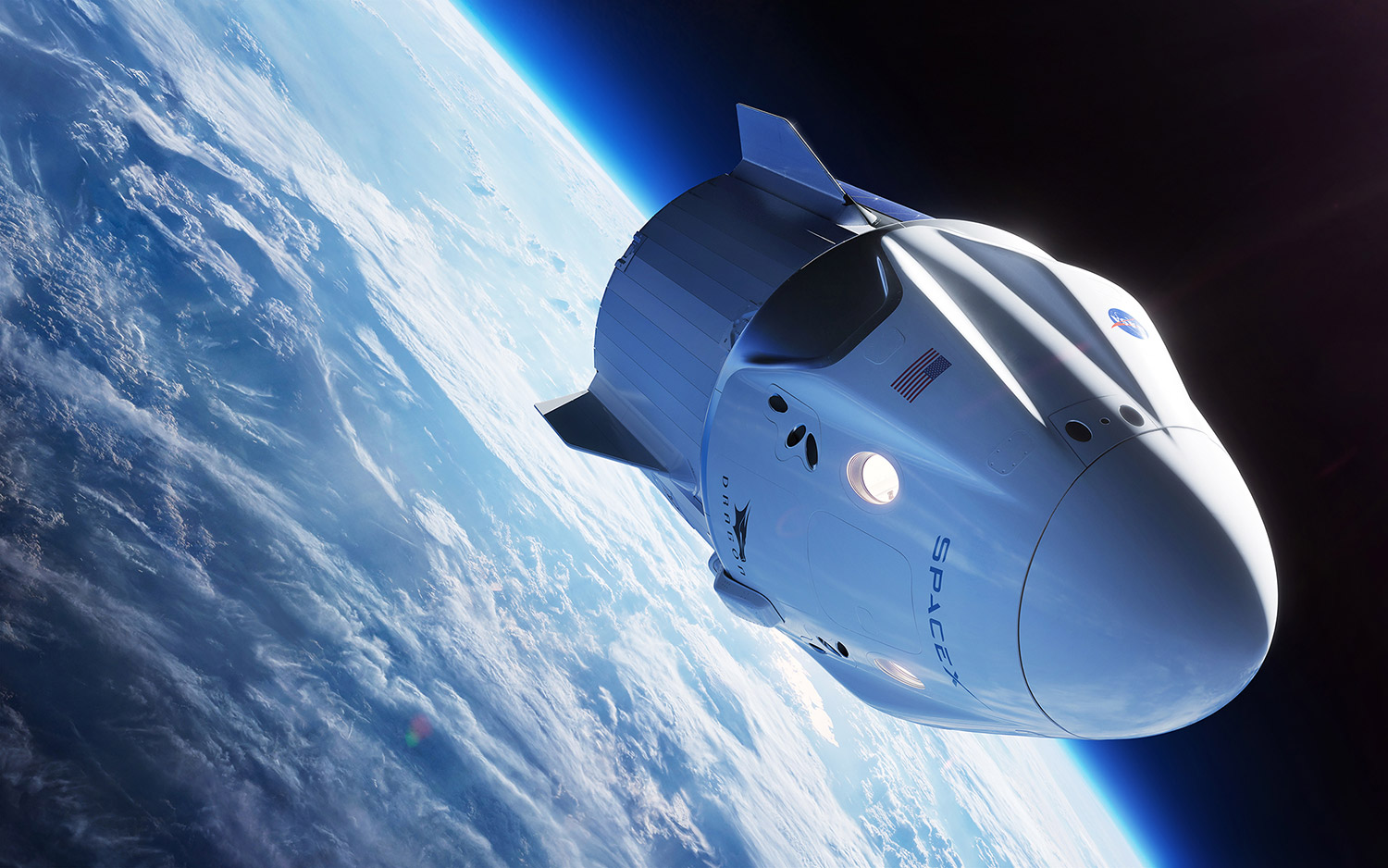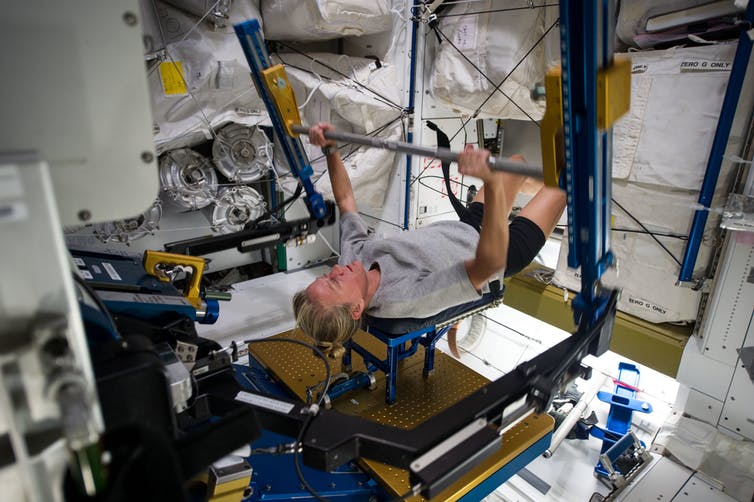Will the average person need to exercise during a commercial spaceflight?


This article was originally published at The Conversation. The publication contributed the article to Space.com's Expert Voices: Op-Ed & Insights.
Andrew Winnard, Lead for the Aerospace Medicine Systematic Review Group and Lecturer, Northumbria University, Newcastle
Claire Bruce-Martin, Senior Lecturer, Sport, Exercise and Rehabilitation, Northumbria University, Newcastle
Jonathan Michael Laws, PhD researcher, Space Medicine, Northumbria University, Newcastle
Nick Caplan, Professor of Aerospace Medicine and Rehabilitation, Northumbria University, Newcastle
This year, Elon Musk's SpaceX plans to launch the first private space mission into orbit with no professional astronauts. Billionaire entrepreneur Jared Isaacman, who chartered the trip and will command the mission, will spend two to four days orbiting Earth in the SpaceX Crew Dragon capsule, alongside three other people.
While this Crew Dragon short mission is unlikely to have much of an effect on the health of the passengers, these capsules will soon be going on much longer trips, which could have a large effect on a person's health. Space missions decrease astronauts' bone density by 1%-1.5% per month and weaken movement and postural muscles. Even the heart gets smaller, as it doesn't have to pump against gravity in space. When these changes take place varies a lot depending on what exercises are done and how often. But if no exercise is done, these changes will start after 14 days. This is why professional astronauts use exercise equipment in space to keep their muscles strong.
Breaking space news, the latest updates on rocket launches, skywatching events and more!
But capsular spacecraft, such as Crew Dragon and NASA's Orion — which will take people to the moon and Mars will not have the space for large exercise equipment, so passengers will be limited in what they can do. It’s uncertain what effect this may have on the average person’s physical health during space flight, which is what Northumbria's Aerospace Medicine Systematic Review Group is helping to answer.
Related: Astronauts share isolation workout tips from space (video)
Space to move
The International Space Station (ISS) has around 33,000 cubic feet (932 cubic meters) of space — around the volume of a Boeing 747. About two-thirds of this space is used for storage and equipment such as exercise devices, including a treadmill, a bike and a machine built for resistance exercise.
The ISS life support system — which maintains a healthy environment for humans by controlling oxygen, heat and moisture levels in the cabin — is also designed to allow astronauts to exercise for two and a half hours a day, six days a week, without too much heat or carbon dioxide building up.
Orion and Crew Dragon both have around 320 cubic feet (9 cubic meters) of living space with around 177 cubic feet (5 cubic meters) of these probably usable for exercise. It would be like going on a four-day trip with three friends in a very small campervan without being able to leave the cabin and move around much.
Space station exercise equipment is far too big and heavy for a capsular spacecraft. It's expected there will only be room for one exercise device in a capsular spacecraft, and this device would need to be about the size of a shoebox and no heavier than 10.6kg. A flywheel exercise device could be used to fit onboard the Orion spacecraft. This is a disc-based device that provides constant resistance during a wide variety of exercises — like a rowing machine.
To exercise as much as ISS astronauts, passengers on capsular spacecraft would probably have to split exercise into several sessions per person daily. This could take up as much as 18 hours per day for the whole crew to exercise if only one device is available. Small bouts of exercise would also ensure filtration systems can scrub additional carbon dioxide, moisture and heat from exercise.

Not exercising
But what if passengers didn’t exercise at all? To understand what the effects might be, we need to look at bed-rest studies. Constant bed rest is a good way of simulating the effects of spaceflight without having to leave Earth. Strict bed rest also causes similar deconditioning (the decline of physical function) as spaceflight.
Research shows that moderate muscle wasting takes about seven days to occur in space if no exercise is performed. So for Crew Dragon passengers, doing no exercise during their two-to-four-day mission will probably only result in a small amount of muscle wasting, as your body needs some level of stress almost every day to maintain good function. And any muscle wasting that occurs will be easy to regain when they return to Earth, simply by being back in normal gravity, holding themselves up and doing their normal daily activities.
But on future longer missions, such as a five-day transit to the moon — and especially a Mars transit that could take 200 or more days — exercise will be vital. After seven days in space, muscle power, volume and endurance decline. Around 14 days in space, muscles' ability to work and recover declines. Large changes, such as difficulty standing, begin by 28-35 days without exercise.
Even though a moon trip is still under seven days, the reduced gravity on the Moon (one-sixth that of Earth’s gravity) is unlikely to be enough to help the human body stay fit for the return trip. So a round-trip Moon journey will require the crew to exercise in order to safely return to Earth. If a lunar stay is more than a few days, astronauts will definitely need exercise to keep their muscles strong and healthy. But these types of missions are likely to remain for professional astronauts only for now.
It’s not yet clear what future exercise devices and protocol will be available for people who spend longer periods in capsular spacecraft. Our research group is investigating which exercises may be most effective at protecting against physical changes while in space. Larger habitat modules may also be attached to capsular spacecraft on longer deep-space missions to make exercise easier.
Passengers on commercial spaceflights may also experience the space adaptation syndrome, which causes motion sickness. It affects 60%-80% of space travellers during the first two to three days of their mission. Stuffy sinuses and headaches from fluids shifting upwards, and back pain as their spines lengthen from lack of gravity, may also happen. But these problems will be minor on a short mission like Crew Dragon's and clear up either during the mission or after returning to Earth.
Hopefully, over time, missions like Crew Dragon’s will become longer, more common and cheaper. But as space travel becomes more viable and missions become longer, it will be important to ensure passengers can exercise properly to avoid any negative effects on their health.
This article is republished from The Conversation under a Creative Commons license. Read the original article.
Follow all of the Expert Voices issues and debates — and become part of the discussion — on Facebook and Twitter. The views expressed are those of the author and do not necessarily reflect the views of the publisher.

Andrew graduated from Sheffield Hallam University in 2013 as a Chartered Physiotherapist having completed two undergraduate degrees in Biomedical Science and Physiotherapy and a Masters degree in Applying Musculoskeletal Physiotherapy. Andrew worked in the NHS and in medical operations at the European Astronaut Centre in Germany before completing a PhD at Northumbria University in 2016. Andrew’s PhD investigated the biomechanics of exercise on a European Space Agency flagship medical project rehabilitation device, for reconditioning deep spinal postural muscles following deconditioning (such as from space flight and in regular low back pain).
Andrew remains heavily involved in Human Spaceflight both in research and leading national space R&D organisations. This includes chairing the UK Space Biomedicine Association in 2012 and holding the role of Coordinator of the UK Space Environments Association since 2013. The UK Space Environments Association has recently become a part of the STFC funded UK Human Spaceflight Capitalisation Office. In this role Andrew is facilitating space research and development across the UK.
